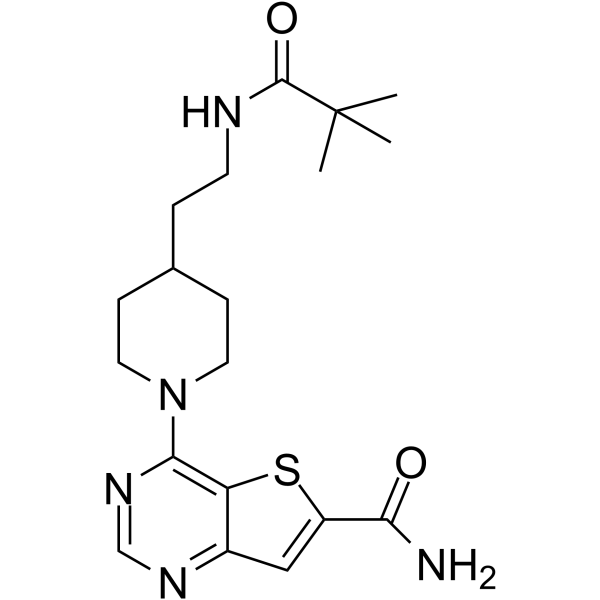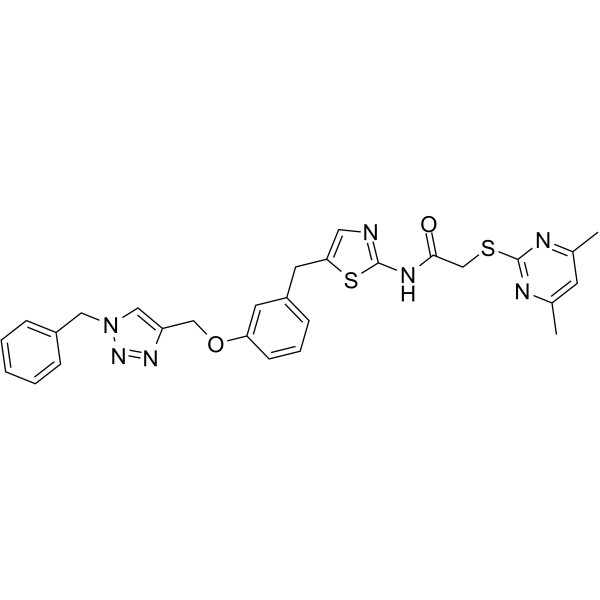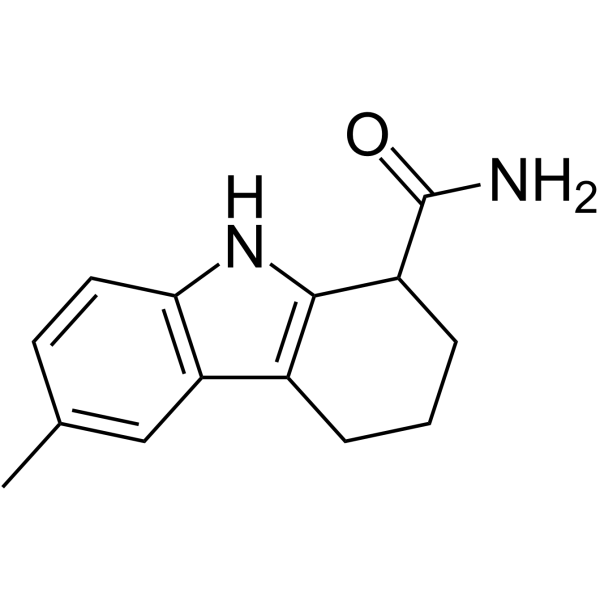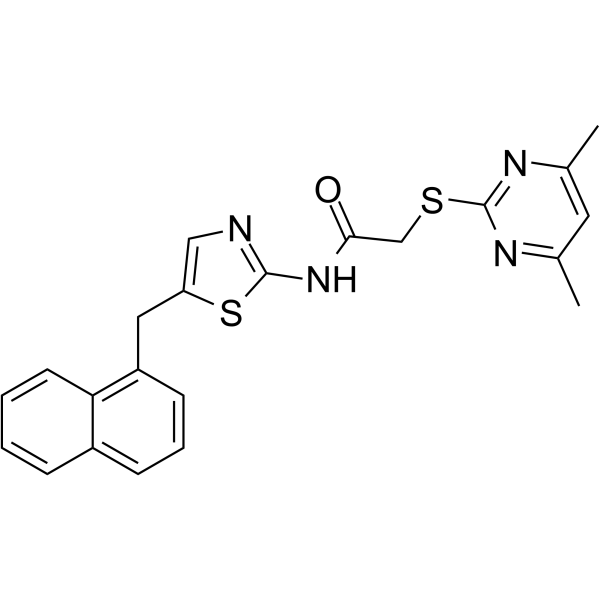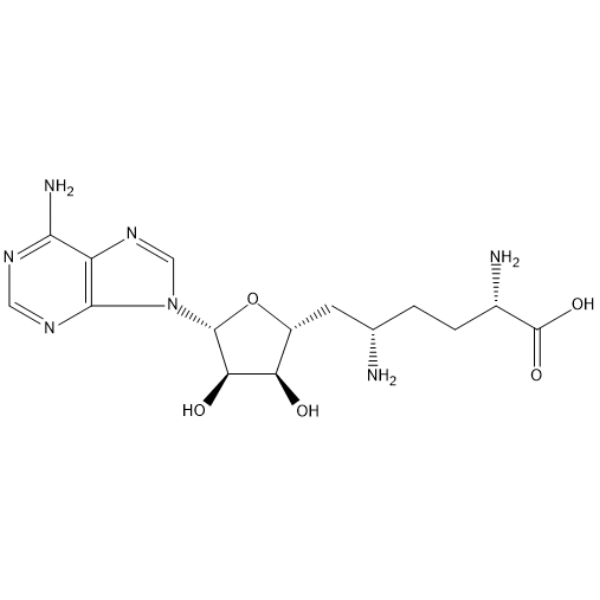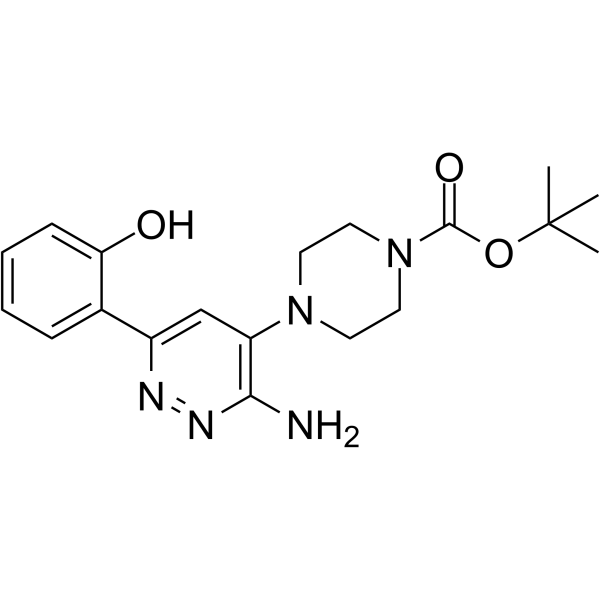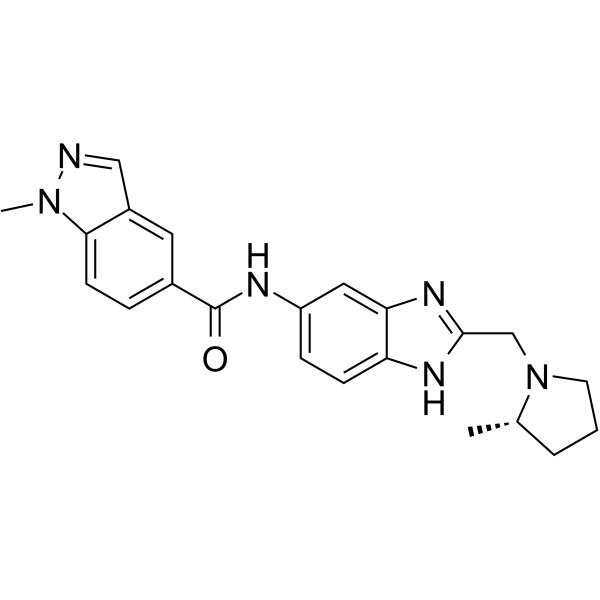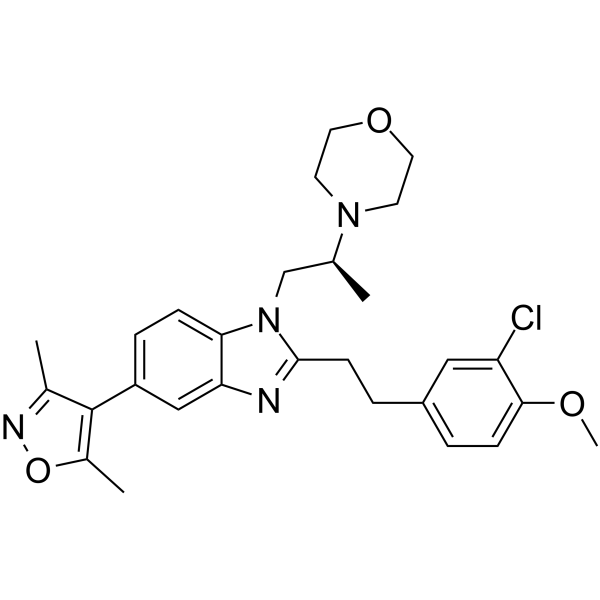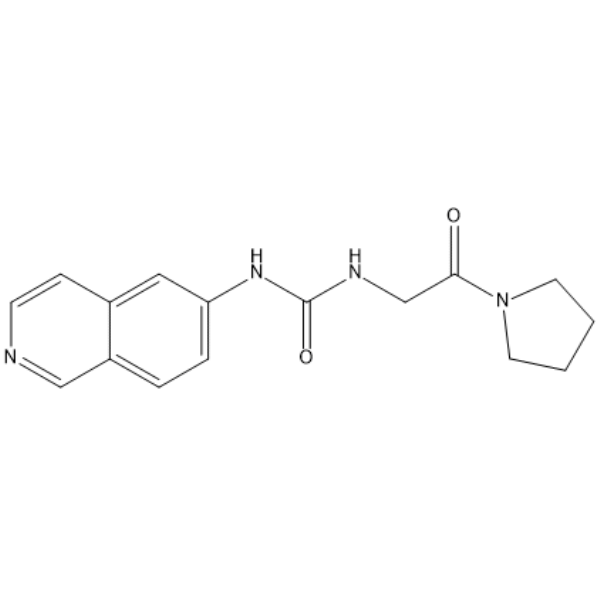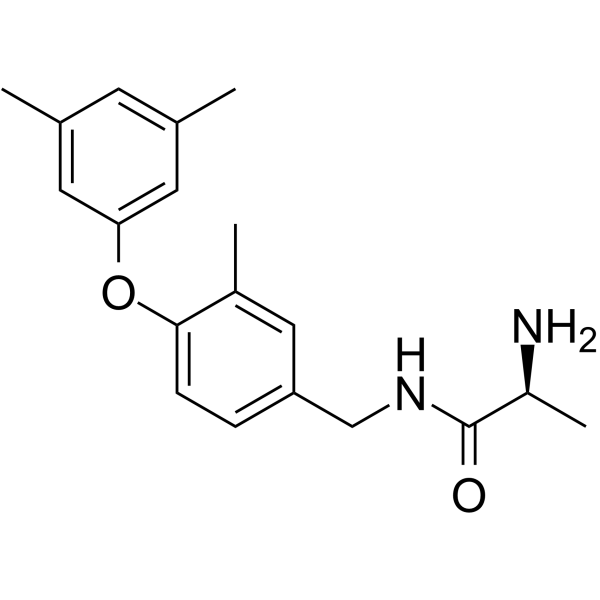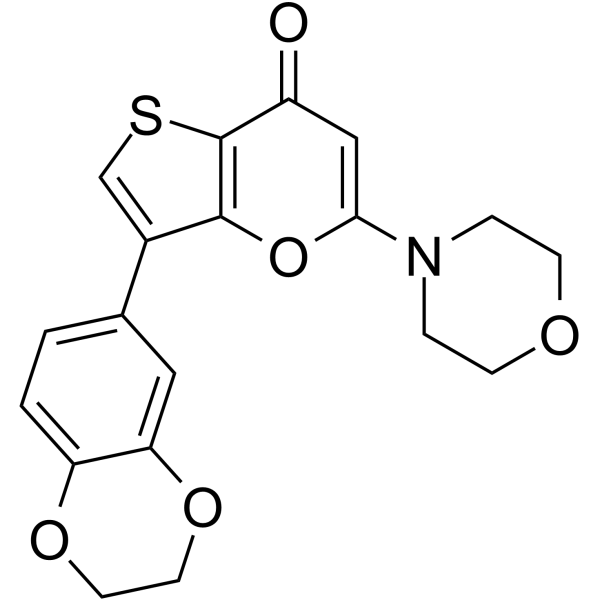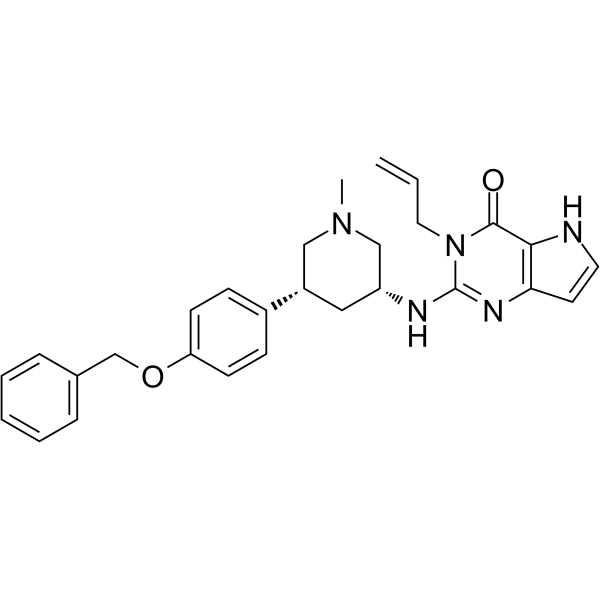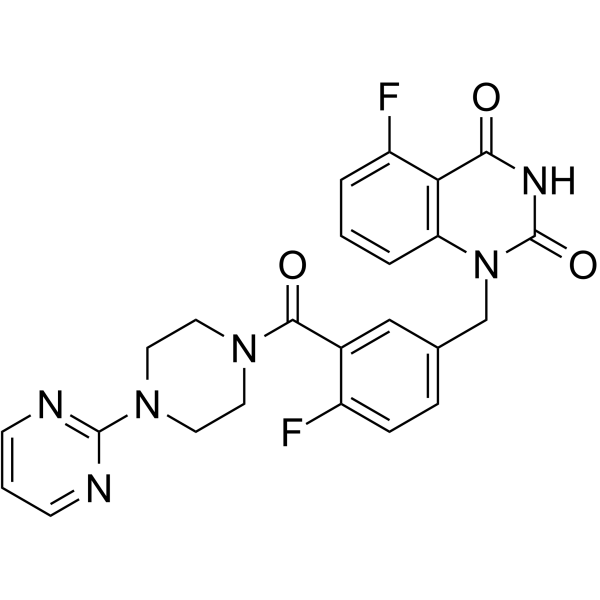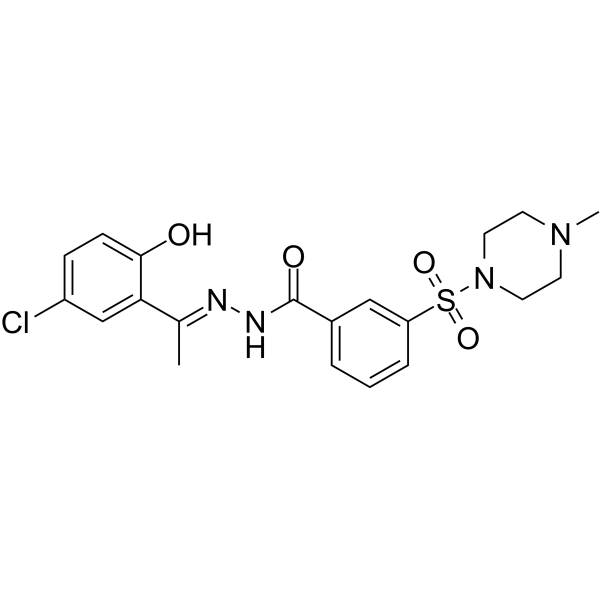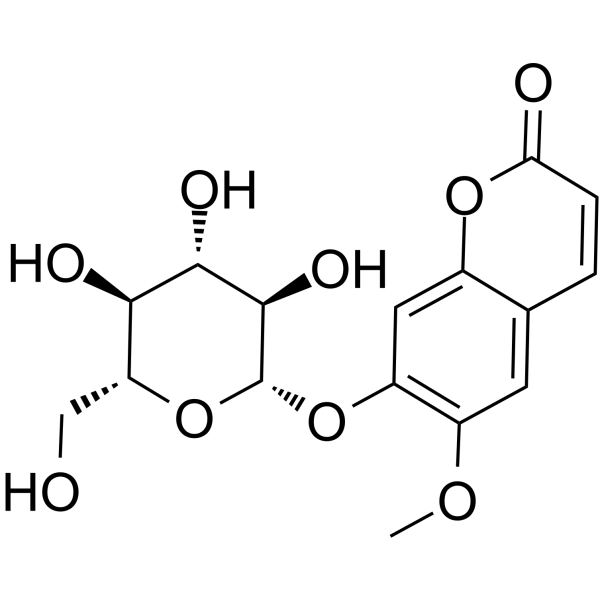|
BP14195
|
SIRT-IN-1
|
|
|
|
|
SIRT-IN-1 is a potent SIRT1/2/3 inhibitor(IC50s of 15, 10, 33 μM, respectively).
|
|
BP14194
|
Sirt2-IN-1
|
|
|
|
|
Sirt2-IN-1 is a inhibitor of sirtuin 2 (Sirt2)(IC50 of 163 nM).
|
|
BP14193
|
SIRT1-IN-1
|
|
|
|
|
SIRT1-IN-1 is a selective inhibitor of SIRT1 with an IC50 of 205 nM. SIRT1-IN-1 is an inhibitor of cytomegalovirus (CMV) with antiviral activity.
|
|
BP14192
|
SirReal2
|
|
|
|
|
SirReal2 is a potent and selective Sirt2 inhibitor with IC50 of 140 nM.
|
|
BP14191
|
Sinefungin
|
|
|
|
|
Sinefungin is an effective inhibitor of virion mRNA(guanine-7-)-methyltransferase, mRNA(nucleoside-2'-)-methyltransferase, and viral multiplication. Sinefungin is a SET7/9 inhibitor and ameliorates renal fibrosis by inhibiting H3K4 methylation.
|
|
BP14190
|
Sinapinic Acid
|
|
|
|
|
Sinapic acid protects the rat liver from CCl4-induced inflammation, most likely by acting as a free radical scavenger and modulator of NF-κB p65 activation and proinflammatory cytokine expression. Sinapic acid with antioxidant role protects cardiac cells and its functions from I/R induced oxidative stress. Sinapic acid is a potentially useful agent for the protection against liver fibrosis and cirrhosis. Sinapic acid prevents the alterations in the levels of lipids and lipoproteins by virtue of its anti-lipidaemic effect in isoproterenol induced myocardial infarcted rats. Sinapic acid ameliorates hyperglycemia through PLC-PKC signals to enhance the glucose utilization in diabetic rats.
|
|
BP14189
|
Shizukaol D
|
|
|
|
|
Shizukaol D exerts a growth inhibition effect on liver cancer cells in a dose- and time-dependent manner by modulating wnt signalling pathway. Shizukaol D may be used to treat metabolic syndrome, it induces mitochondrial dysfunction by depolarizing the mitochondrial membrane and suppressing energy production, which may result in AMPK activation.
|
|
BP14188
|
SGC-SMARCA-BRDVIII
|
|
|
|
|
SGC-SMARCA-BRDVIII is a potent and selective inhibitor of SMARCA2, SMARCA4, PB1(2), PB1(3) and PB1(5) with Kds of 35 nM, 36 nM, 3.7 μM, 2.0 μM and 13 nM, respectively.
|
|
BP14187
|
SGC-iMLLT
|
|
|
|
|
SGC-iMLLT is a potent and selective MLLT1/3-histone interactions inhibitor(IC50 = 0.26 μM),and is a first-in-class chemical probe displaying cellular target engagement of MLLT1(Kd = 0.129 μM) and MLLT3(Kd = 0.077 μM).
|
|
BP14186
|
SGC-CBP30
|
|
|
|
|
SGC-CBP30 is an effective CREBBP/EP300 inhibitor (IC50: 21/38 nM).
|
|
BP14185
|
SGC707
|
|
|
|
|
SGC707 is a potent, selective, and cell-active allosteric inhibitor of PRMT3.
|
|
BP14184
|
SGC2085
|
|
|
|
|
SGC2085 is an effective and selective coactivator-associated arginine methyltransferase 1 (CARM1) inhibitor (IC50: 50 nM).
|
|
BP14183
|
SGC2085 HCl
|
|
|
|
|
SGC2085 is a potent and selective coactivator associated arginine methyltransferase 1 (CARM1) Inhibitor with an IC50 of 50 nM and more than undred-fold selectivity over other PRMTs. CARM1 is an important positive modulator of Wnt/β-catenin transcription and neoplastic transformation in colorectal cancer as well as a critical factor in estrogen-stimulated breast cancer growth, and its depletion results in decreased proliferation of myeloid leukemia cells in vivo.
|
|
BP14182
|
SF2523
|
|
|
|
|
SF2523 is a highly selective and potent inhibitor.
|
|
BP14181
|
SETDB1-TTD-IN-1
|
|
|
|
|
SETDB1-TTD-IN-1 is a potent, selective and endogenous binder competitive inhibitor of SETDB1-TTD with a Kd of 88 nM.
|
|
BP14180
|
Senaparib
|
|
|
|
|
Senaparib is a novel highly potent and selective oral PARP1/2 inhibitor with strong antitumor activity.
|
|
BP14179
|
Selisistat S-enantiomer
|
|
|
|
|
Selisistat S-enantiomer is an effective and specific SIRT1 inhibitor (IC50 = 98 nM) and shows >200-fold selectivity against SIRT2/3.
|
|
BP14178
|
Selisistat R-enantiomer
|
|
|
|
|
Selisistat R-enantiomer is a SIRT1 inhibitor with much less activity than the R-enantiomer of Selisistat (IC50 of SIRT1 > 100 μM).
|
|
BP14177
|
Seclidemstat
|
|
|
|
|
Seclidemstat is an effective LSD1 inhibitor, with a mean IC50 of 127 nM.
|
|
BP14176
|
Scopolin
|
|
|
|
|
Scopolin formation is increased by the enhanced activity of PAL. Scopolin can reduce the clinical symptoms of rat AIA by inhibiting inflammation and angiogenesis, and this compound may be a potent agent for angiogenesis related diseases and can serve as a structural base for screening more potent synthetic analogs.
|
